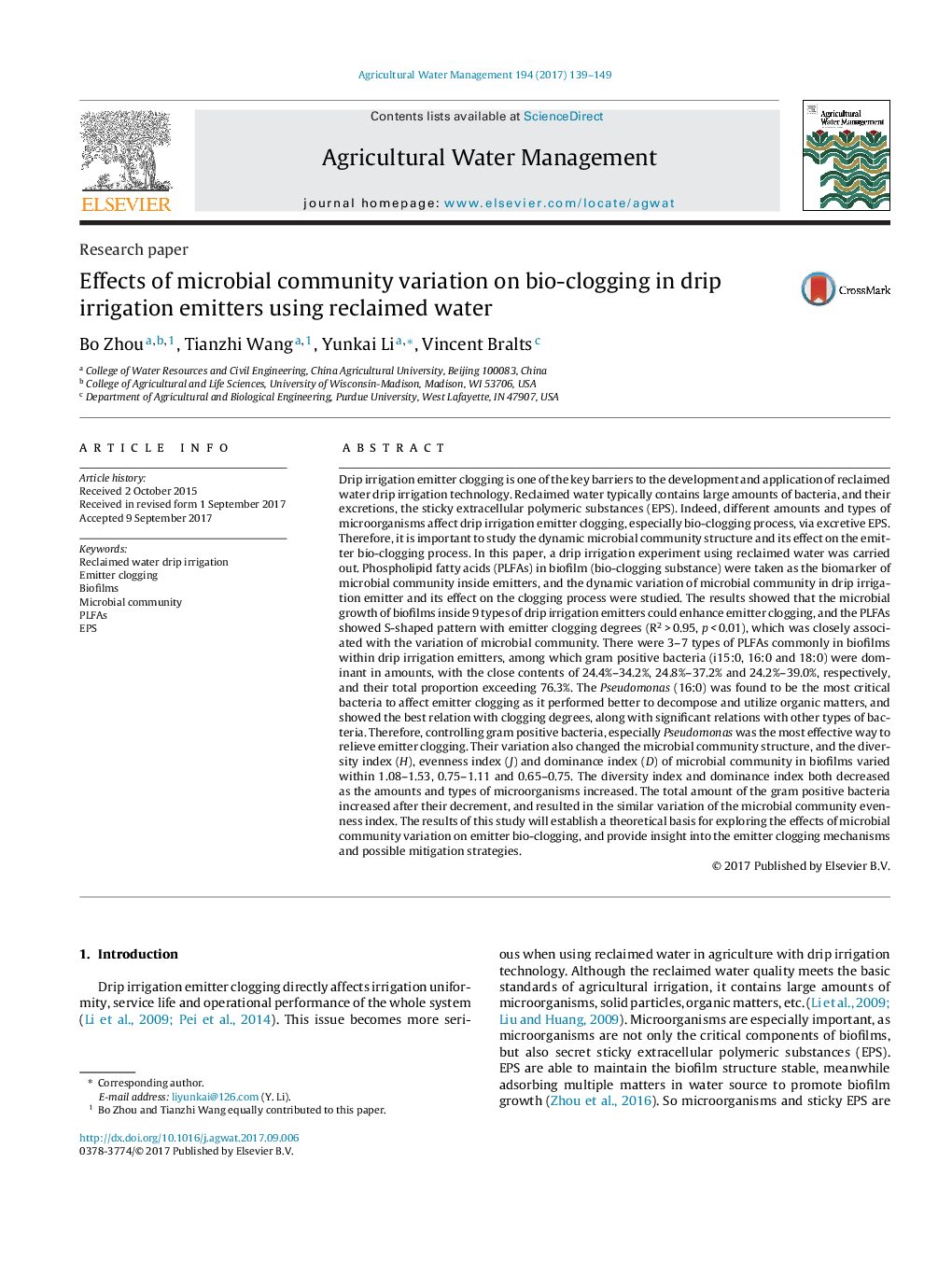| کد مقاله | کد نشریه | سال انتشار | مقاله انگلیسی | نسخه تمام متن |
|---|---|---|---|---|
| 5758475 | 1622886 | 2017 | 11 صفحه PDF | دانلود رایگان |
عنوان انگلیسی مقاله ISI
Effects of microbial community variation on bio-clogging in drip irrigation emitters using reclaimed water
ترجمه فارسی عنوان
اثر تغییرات جمعیت میکروبی در برآمدگی زیستی در اظهارنظرهای آبیاری قطره ای با استفاده از آب تجدیدپذیر
دانلود مقاله + سفارش ترجمه
دانلود مقاله ISI انگلیسی
رایگان برای ایرانیان
موضوعات مرتبط
علوم زیستی و بیوفناوری
علوم کشاورزی و بیولوژیک
علوم زراعت و اصلاح نباتات
چکیده انگلیسی
Drip irrigation emitter clogging is one of the key barriers to the development and application of reclaimed water drip irrigation technology. Reclaimed water typically contains large amounts of bacteria, and their excretions, the sticky extracellular polymeric substances (EPS). Indeed, different amounts and types of microorganisms affect drip irrigation emitter clogging, especially bio-clogging process, via excretive EPS. Therefore, it is important to study the dynamic microbial community structure and its effect on the emitter bio-clogging process. In this paper, a drip irrigation experiment using reclaimed water was carried out. Phospholipid fatty acids (PLFAs) in biofilm (bio-clogging substance) were taken as the biomarker of microbial community inside emitters, and the dynamic variation of microbial community in drip irrigation emitter and its effect on the clogging process were studied. The results showed that the microbial growth of biofilms inside 9 types of drip irrigation emitters could enhance emitter clogging, and the PLFAs showed S-shaped pattern with emitter clogging degrees (R2 > 0.95, p < 0.01), which was closely associated with the variation of microbial community. There were 3-7 types of PLFAs commonly in biofilms within drip irrigation emitters, among which gram positive bacteria (i15:0, 16:0 and 18:0) were dominant in amounts, with the close contents of 24.4%-34.2%, 24.8%-37.2% and 24.2%-39.0%, respectively, and their total proportion exceeding 76.3%. The Pseudomonas (16:0) was found to be the most critical bacteria to affect emitter clogging as it performed better to decompose and utilize organic matters, and showed the best relation with clogging degrees, along with significant relations with other types of bacteria. Therefore, controlling gram positive bacteria, especially Pseudomonas was the most effective way to relieve emitter clogging. Their variation also changed the microbial community structure, and the diversity index (H), evenness index (J) and dominance index (D) of microbial community in biofilms varied within 1.08-1.53, 0.75-1.11 and 0.65-0.75. The diversity index and dominance index both decreased as the amounts and types of microorganisms increased. The total amount of the gram positive bacteria increased after their decrement, and resulted in the similar variation of the microbial community evenness index. The results of this study will establish a theoretical basis for exploring the effects of microbial community variation on emitter bio-clogging, and provide insight into the emitter clogging mechanisms and possible mitigation strategies.
ناشر
Database: Elsevier - ScienceDirect (ساینس دایرکت)
Journal: Agricultural Water Management - Volume 194, December 2017, Pages 139-149
Journal: Agricultural Water Management - Volume 194, December 2017, Pages 139-149
نویسندگان
Bo Zhou, Tianzhi Wang, Yunkai Li, Vincent Bralts,
